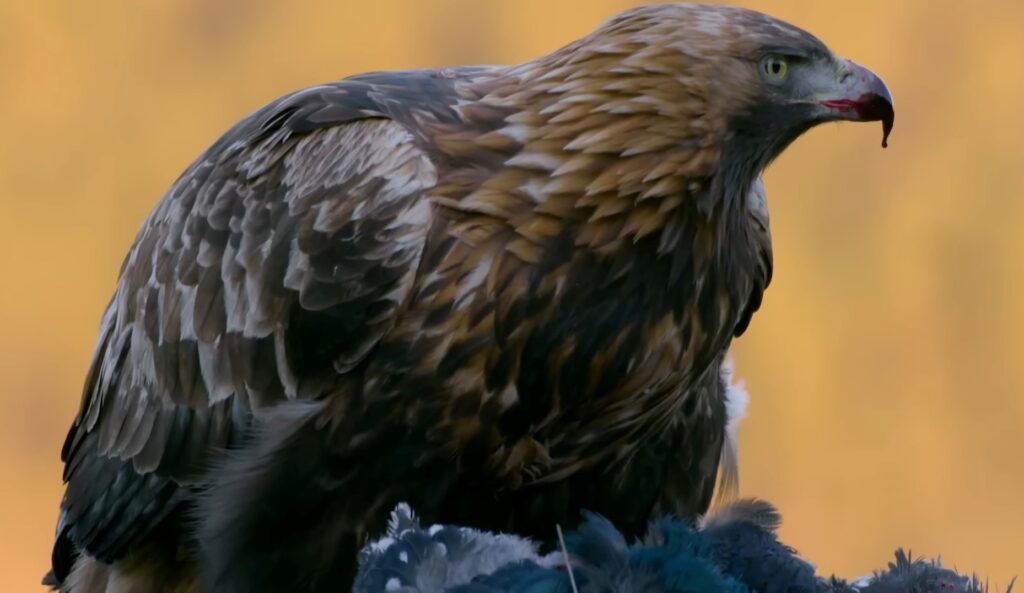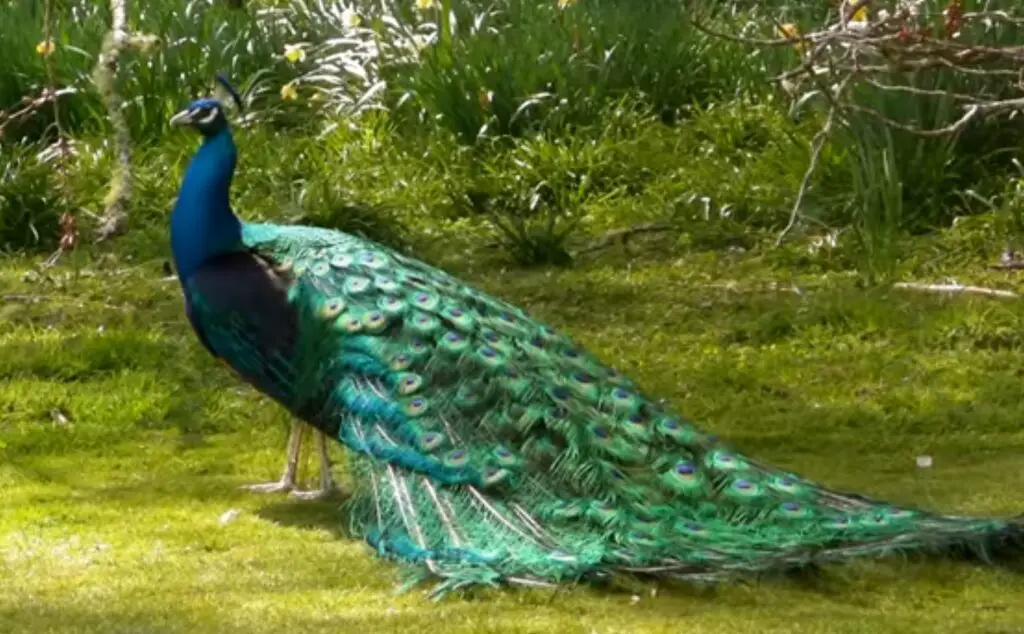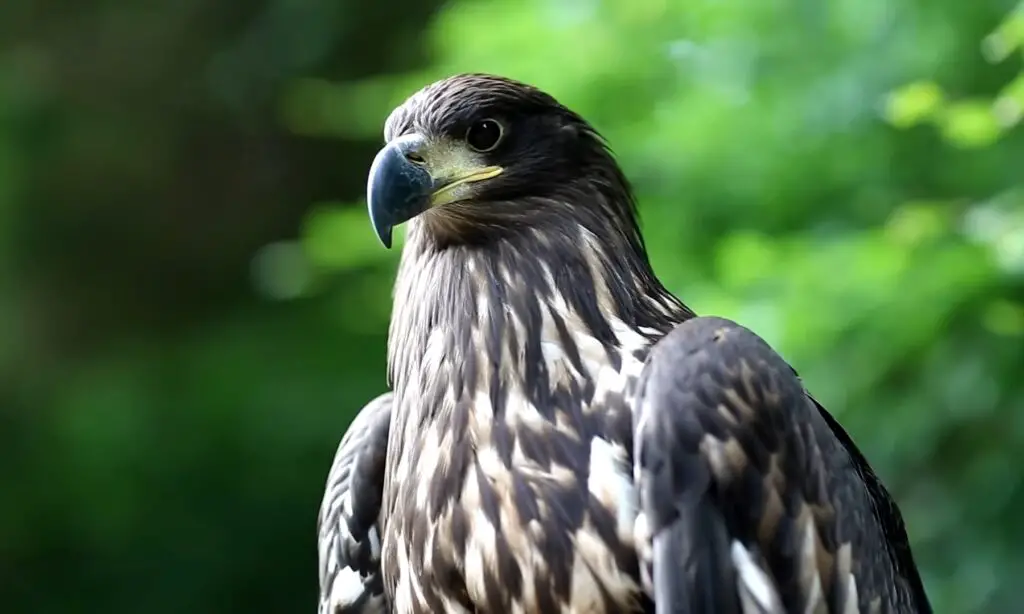The Golden Eagle is a magnificent bird of prey that is widely distributed throughout the Northern Hemisphere. This majestic bird is known for its powerful build, sharp talons, and keen eyesight, which makes it one of the most successful hunters in the animal kingdom.
Appearance of the Golden Eagle
The Golden Eagle is a large bird that can grow up to a meter in length and have a wingspan of up to two meters. It has a distinctive brown plumage on its head and neck, which contrasts with its darker brown body. The bird’s eyes are a bright yellow, which gives it a piercing and intense stare. The eagle’s talons are sharp and powerful, and they are perfectly suited for catching and killing prey.
Golden Eagle Habitat
The Golden Eagle is found in a wide variety of habitats, including mountain ranges, deserts, grasslands, and forests. The bird is distributed throughout the Northern Hemisphere, ranging from North America to Europe and Asia. The bird’s adaptability to different environments has enabled it to thrive in many different types of habitats.

Golden Eagle Behavior
The Golden Eagle is a solitary bird that spends most of its time perched on high vantage points, scanning its surroundings for potential prey. The bird is known for its impressive hunting skills and will typically target small mammals such as rabbits, hares, and ground squirrels. The eagle will also hunt larger prey such as deer, goats, and even young caribou.
Breeding of the Golden Eagle
The Golden Eagle is a monogamous bird that breeds during the spring and summer months. The female will typically lay 1-3 eggs in a large stick nest that is constructed on a cliff face or in a tree. Both the male and female take turns incubating the eggs, and after about a month, the eggs hatch. The chicks are born with a downy plumage and are fed by both parents until they are ready to fledge.

Golden Eagle vs Bald Eagle
Golden Eagles (Aquila chrysaetos) and Bald Eagles (Haliaeetus leucocephalus) are both large and impressive birds of prey, but they have distinct differences in their appearance, behavior, habitat, and range. Here’s a comparison between the two:
1. Appearance:
- Golden Eagles: These eagles have dark brown feathers with golden-yellow napes on their necks. They are more uniformly dark brown in color, and their legs are feathered.
- Bald Eagles: Contrary to their name, bald eagles are not actually bald. They have distinctive white-feathered heads (adults), a brown body, and a distinctive hooked yellow beak.
2. Size:
- Golden Eagles: Generally, they are slightly smaller than bald eagles, with a wingspan of around 6 to 7 feet (1.8 to 2.1 meters).
- Bald Eagles: They are larger with a wingspan of 6 to 7.5 feet (1.8 to 2.3 meters), making them one of the largest birds of prey in North America.
3. Behavior:
- Golden Eagles: They are known for their incredible hunting prowess, often preying on mammals like rabbits, squirrels, and even larger animals like deer fawns. They are fast and agile in flight, and their hunting techniques include both soaring and stooping (high-speed dives) to catch their prey.
- Bald Eagles: These eagles are opportunistic feeders. While they primarily feed on fish (especially near water bodies), they also scavenge carrion and can take small mammals and birds as prey. They are known for their impressive aerial displays during courtship.
4. Habitat and Range:
- Golden Eagles: They are found across Eurasia and North America, preferring open or semi-open landscapes such as grasslands, mountains, and tundra. They are also known to inhabit areas with cliffs, where they build large nests.
- Bald Eagles: They are native to North America and are commonly found near coastlines, large lakes, rivers, and marshes. They also prefer areas with abundant fish as a food source.
5. Conservation Status:
- Golden Eagles: Their conservation status varies by region. In some areas, they are considered of least concern, while in others, they may face threats such as habitat loss, hunting, and collisions with human structures.
- Bald Eagles: They were once endangered in the United States but have made a remarkable recovery thanks to conservation efforts, including the banning of the pesticide DDT. They are no longer listed as endangered and are now classified as a species of least concern.
Both golden eagles and bald eagles are magnificent and important members of their ecosystems. Their unique characteristics and roles in their respective habitats contribute to the overall biodiversity and health of their environments.
 The Golden Eagle is not currently considered to be threatened, but its populations are declining due to habitat loss, hunting, and persecution. The bird is also vulnerable to poisoning from lead ammunition, which can be ingested when the eagle consumes prey that has been shot. Conservation efforts are being made to protect the bird’s habitat and reduce the use of lead ammunition to ensure the survival of this magnificent bird.
The Golden Eagle is not currently considered to be threatened, but its populations are declining due to habitat loss, hunting, and persecution. The bird is also vulnerable to poisoning from lead ammunition, which can be ingested when the eagle consumes prey that has been shot. Conservation efforts are being made to protect the bird’s habitat and reduce the use of lead ammunition to ensure the survival of this magnificent bird.
The Golden Eagle is a powerful and impressive bird of prey that is admired and respected by many. Its sharp talons, keen eyesight, and impressive hunting skills make it one of the most successful predators in the animal kingdom. The bird’s adaptability to different environments and habitats makes it an important part of the ecosystem, and conservation efforts are essential to ensure its survival for future generations.







